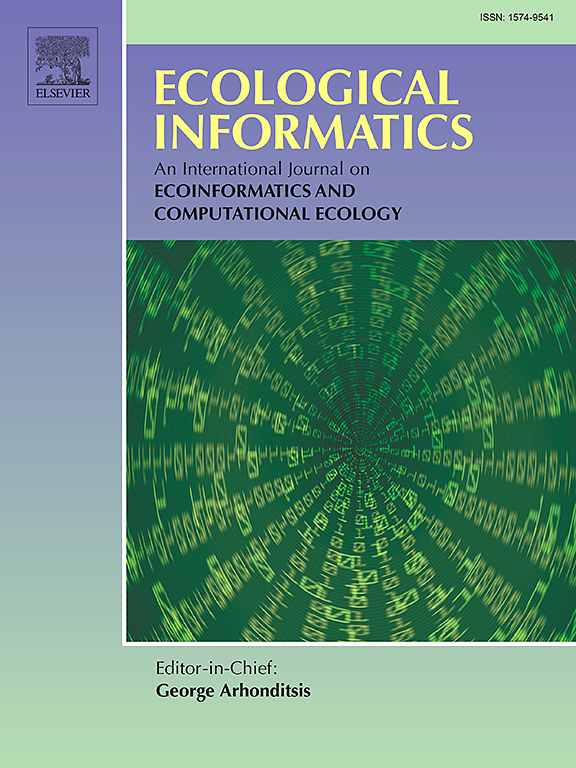河流质量管理:整合不确定性、故障概率和同化能力
IF 5.8
2区 环境科学与生态学
Q1 ECOLOGY
引用次数: 0
摘要
由于水力和水文参数的不确定性,河流水质管理具有挑战性。本研究在 MATLAB 中整合了解决平流-分散方程的对称指数函数 (SEF) 方法和蒙特卡罗方法。通过这种组合,我们可以探索河流的同化能力以及维持理想水质标准的失败概率 (Pf)。在这里,Pf 代表在不同河流条件下污染物浓度超过可接受限值的可能性。本研究的一个主要贡献是引入了一个利用遗传编程(GP)软计算工具开发的新方程,用于计算考虑到水质提供失败概率的同化能力。该方程通过量化污染物同化动态,为水资源管理中的风险评估提供了宝贵的工具。通过接近 1 的高判定系数 (R2) 和总指数 (OI) 值,以及较低的均方根误差 (RMSE) 和平均绝对误差 (MAE),验证了该方程的稳健性。研究确定了对可靠性指数 (β)有显著影响的关键河流特征,如流速和污染物负荷。通过概述如何通过调整这些参数来实现目标可靠性指数(β=4.526),我们的研究为保护河流生态系统提供了一种实用的方法。例如,增加 76% 的流速可将河流从安全状态(Pf=3×10-5)转变为危险状态(Pf=1),而降低 44% 的流速则可增加 57% 的污染物同化量。这些发现凸显了流量控制作为一种具有成本效益的策略,在缓解高浓度污染物和确保可持续水质管理方面的重要性。通过将数值方法与可靠性采样方法和软计算技术相结合,这项研究加深了人们对河流系统动态的理解,并为保护水资源的明智决策提供了支持。本文章由计算机程序翻译,如有差异,请以英文原文为准。
River quality management: Integrating uncertainty, failure probability, and assimilation capacity
Managing river water quality is challenging due to uncertainties in hydraulic and hydrologic parameters. This study integrates the symmetric exponential function (SEF) approach for solving the advection-dispersion equation with the Monte Carlo method in MATLAB. This combination allows us to explore the river's assimilation capacity and the failure probability () of maintaining desired water quality standards. Here, represents the likelihood of pollutant concentrations exceeding acceptable limits under varying river conditions. A key contribution of this study is the introduction of a novel equation, developed using the Genetic Programming (GP) soft computing tool, to calculate assimilation capacity considering the failure probability of water quality provision. This equation provides a valuable tool for risk assessment in water resource management by quantifying pollutant assimilation dynamics. Its robustness is validated through high Coefficient of Determination (R2) and Overall Index (OI) values near 1, along with low Root Mean Square Error (RMSE) and Mean Absolute Error (MAE). The study identifies critical river characteristics, such as flow velocity and pollutant load, significantly influencing the reliability index (). By outlining how adjustments in these parameters can achieve a target reliability index (), our study offers a practical approach to safeguarding river ecosystems. For example, increasing flow velocity by 76 % can shift the river from a safe state () to a hazardous state (), while a 44 % decrease in velocity allows for 57 % more pollutant assimilation. These findings highlight the importance of flow control as a cost-effective strategy for mitigating high pollutant concentrations and ensuring sustainable water quality management. By integrating numerical approaches with reliability sampling methods and soft computing techniques, this study enhances understanding of river system dynamics and supports informed decision-making for protecting water resources.
求助全文
通过发布文献求助,成功后即可免费获取论文全文。
去求助
来源期刊

Ecological Informatics
环境科学-生态学
CiteScore
8.30
自引率
11.80%
发文量
346
审稿时长
46 days
期刊介绍:
The journal Ecological Informatics is devoted to the publication of high quality, peer-reviewed articles on all aspects of computational ecology, data science and biogeography. The scope of the journal takes into account the data-intensive nature of ecology, the growing capacity of information technology to access, harness and leverage complex data as well as the critical need for informing sustainable management in view of global environmental and climate change.
The nature of the journal is interdisciplinary at the crossover between ecology and informatics. It focuses on novel concepts and techniques for image- and genome-based monitoring and interpretation, sensor- and multimedia-based data acquisition, internet-based data archiving and sharing, data assimilation, modelling and prediction of ecological data.
 求助内容:
求助内容: 应助结果提醒方式:
应助结果提醒方式:


